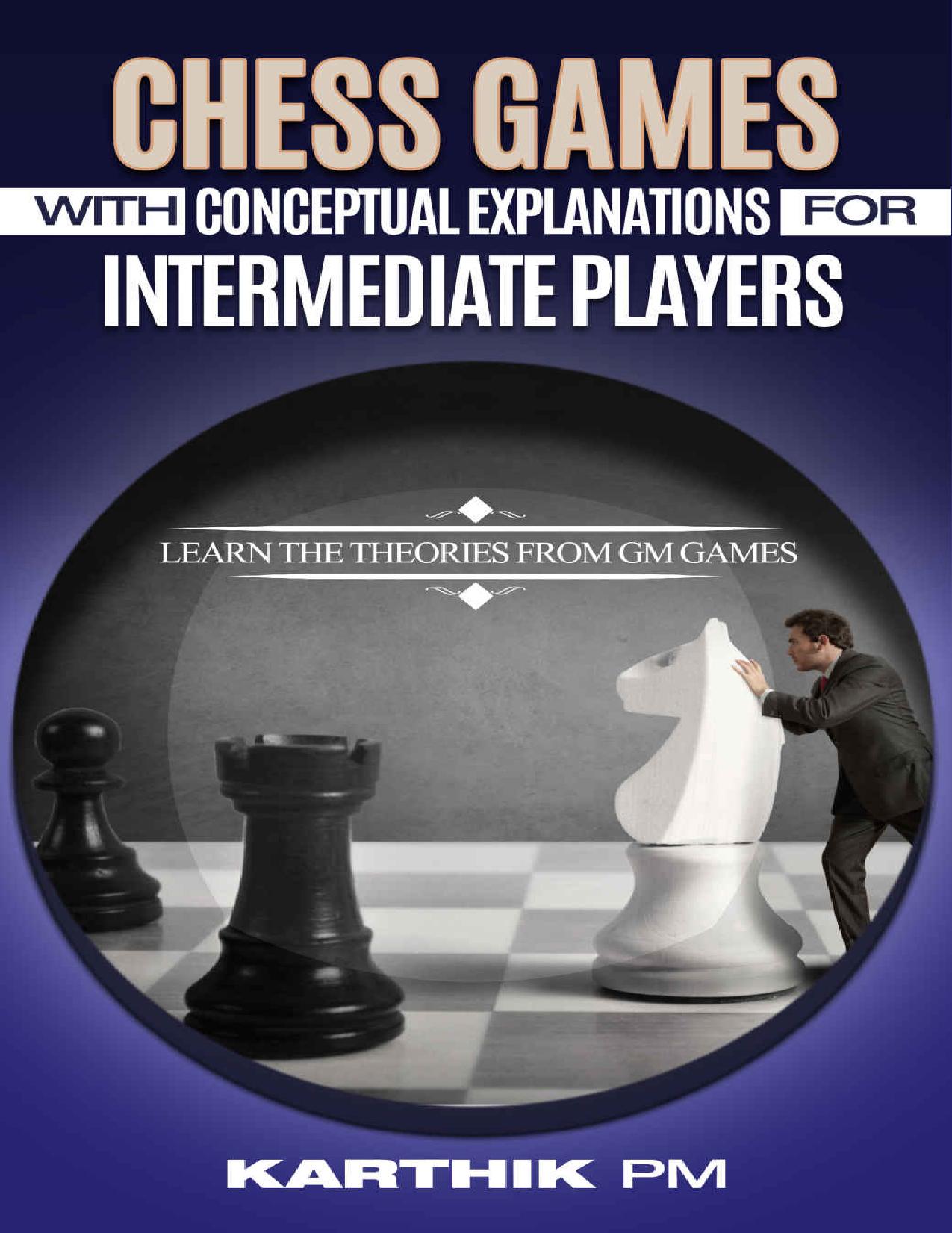Chess Games With Conceptual Explanations For Intermediate Players: Learn the theories from GM games. by Karthik PM

Author:Karthik PM [PM, Karthik]
Language: eng
Format: azw3, pdf
Published: 2016-07-14T16:00:00+00:00
Game #7. Ruban, Vadim VS Magam Badals
Tournament â Santa Clara 1991
Ratings â Ruban 2575, Magam 2490
Opening â Queenâs Gambit Accepted main line with Qe2
1. d4, d5; 2. c4, dxc4; 3. Nf3, Nf6; 4.e3, e6; 5. Bxc4, c5
Donât block the c pawn in a Queen Pawn opening
Moving the c pawn allows your Queen to come into play. By opening a diagonal, moving, and creating a pawn lever with c pawn to opponentâs d pawn, you have more control over the center. Youâre also trying to deflect the opponentâs d pawn which controls the center!
6. Qe2, a6!
Qe2 is a development for the queen and later, after castling, white can bring the Rook to d file if needed.
a6 is an idea with b5 (Tempo) and develop Bb7. This type of long diagonal bishop is known as fianchetto bishop!
7. dxc5, Bxc5
In the last game, we discussed strategies and tactics! And the closed center. In this game, white decided to open the center by capturing on c5.
If the center is open, try to control and increase space in the center.
If the center is open, donât waste moves by un-developing and re-developing your pieces or by making unnecessary pawn movements.
If the center is open, donât go for flank attacks without making sure that the center is yours.
If the center is open, try to create attacking plans in the center.
8. O-O, Nc6; 9. e4, Qc7; 10. e5, Nd7; 11. Bf4, Nd4; 12. Nxd4, Bxd4; 13.Rd1
As we understand, both the players are playing in the center where white tries to gain space in the center and black is creating an attacking plan against the e5 pawn!
Bc5?
(Bxb2; Qxb2, Qxc4; Rd4) would have been the more appropriate variation, in this variation however, black gains a pawn. Still, white has a better hold in this position since
> White has developed most of his pieces
> White king is castled
> Blackâs pieces are not developed yet
> Black has not castled yet
> Black should move his Queen since it is under attack and white will eventually develop another piece
> Black has a hole on d6 which can be easily occupied by white Knight
Because of these reasons, black has retained his black bishop!
14. Nc3, b5; 15. Bb3, Bb7
Black has just gained a tempo and developed his bishop to b7
16. Ne4!
An excellent idea is bringing the Knight to the d6 square. After that, Black should capture the knight with the bishop since that knight would irritate the opponent. Thereby, white can create a passed pawn or capture on d6 with rook and can double the rook on d file. White also gains a pair of bishops advantage!
Bxe4
Black chooses to lessen damage to his position by giving away the " pair of bishops" advantage to the opponent, but keeping his black bishop which controls d6.
17.Qxe4, O-O; 18. Rac1, Rac8; 19. Be3, Rfd8; 20. Kf1!?, Qb6
Both sides rapidly developed all of their pieces but black is suffering with a pinned piece on c5
Kf1 is a brilliant idea for avoiding back rank threats. Bringing the king to the white exposed diagonal doesnât make it vulnerable!
21.
Download
Chess Games With Conceptual Explanations For Intermediate Players: Learn the theories from GM games. by Karthik PM.pdf
This site does not store any files on its server. We only index and link to content provided by other sites. Please contact the content providers to delete copyright contents if any and email us, we'll remove relevant links or contents immediately.
The Infinite Retina by Robert Scoble Irena Cronin(6063)
Harry Potter and the Cursed Child: The Journey by Harry Potter Theatrical Productions(4428)
The Sports Rules Book by Human Kinetics(4270)
Molly's Game: From Hollywood's Elite to Wall Street's Billionaire Boys Club, My High-Stakes Adventure in the World of Underground Poker by Molly Bloom(3472)
A Knight of the Seven Kingdoms by George R R Martin(3174)
Quidditch Through the Ages by J.K. Rowling(3052)
How To by Randall Munroe(3015)
Flowers For Algernon by Daniel Keyes(2921)
Quidditch Through the Ages by J K Rowling & Kennilworthy Whisp(2921)
Quidditch Through the Ages by Kennilworthy Whisp by J.K. Rowling(2807)
Stacked Decks by The Rotenberg Collection(2796)
Quidditch through the Ages by J. K. Rowling(2758)
Quidditch Through The Ages by J. K. Rowling(2720)
776 Stupidest Things Ever Said by Ross Petras(2678)
Ready Player One: A Novel by Ernest Cline(2634)
What If?: Serious Scientific Answers to Absurd Hypothetical Questions by Randall Munroe(2626)
Beautiful Oblivion by Jamie McGuire(2556)
The Book of Questions: Revised and Updated by Gregory Stock Ph.d(2502)
Champions of Illusion by Susana Martinez-Conde & Stephen Macknik(2403)
